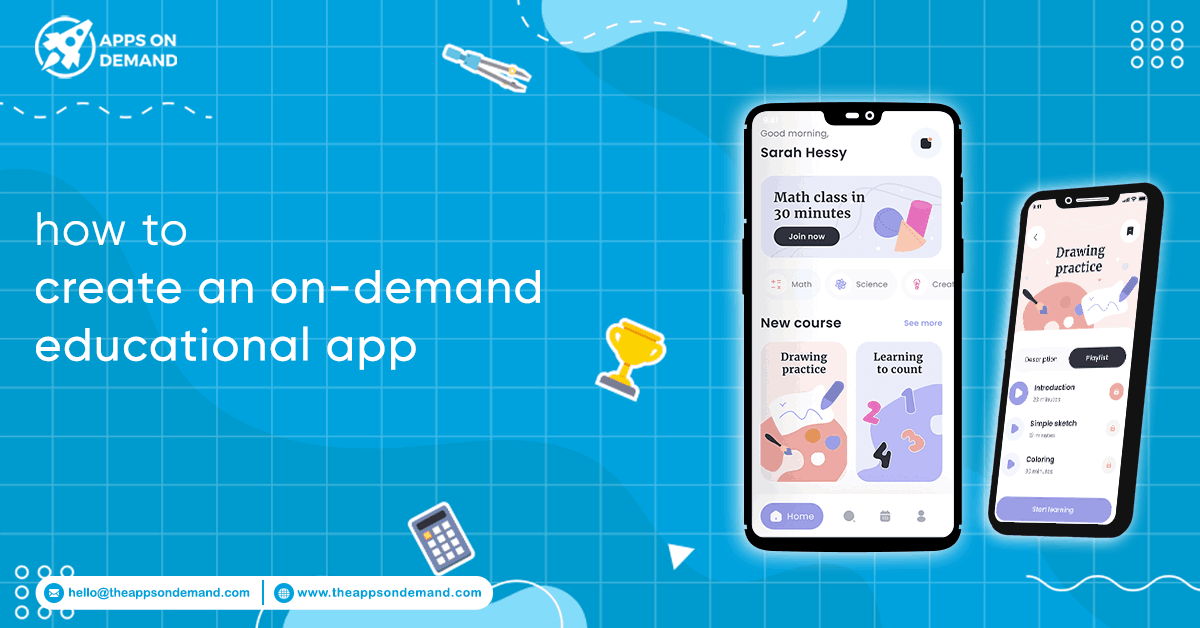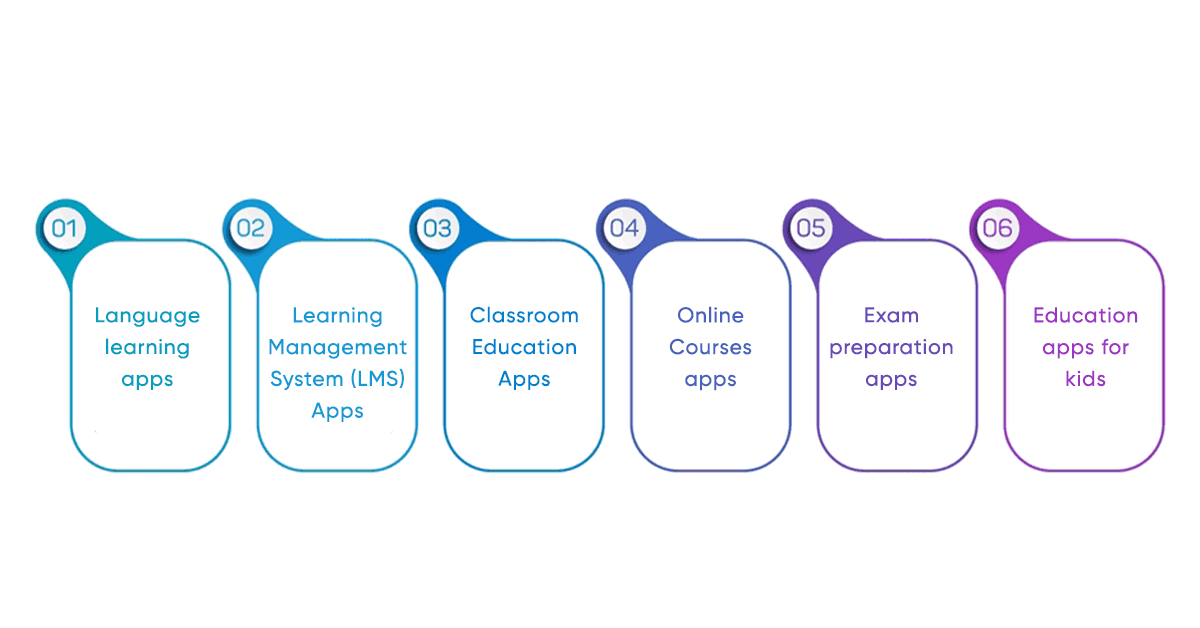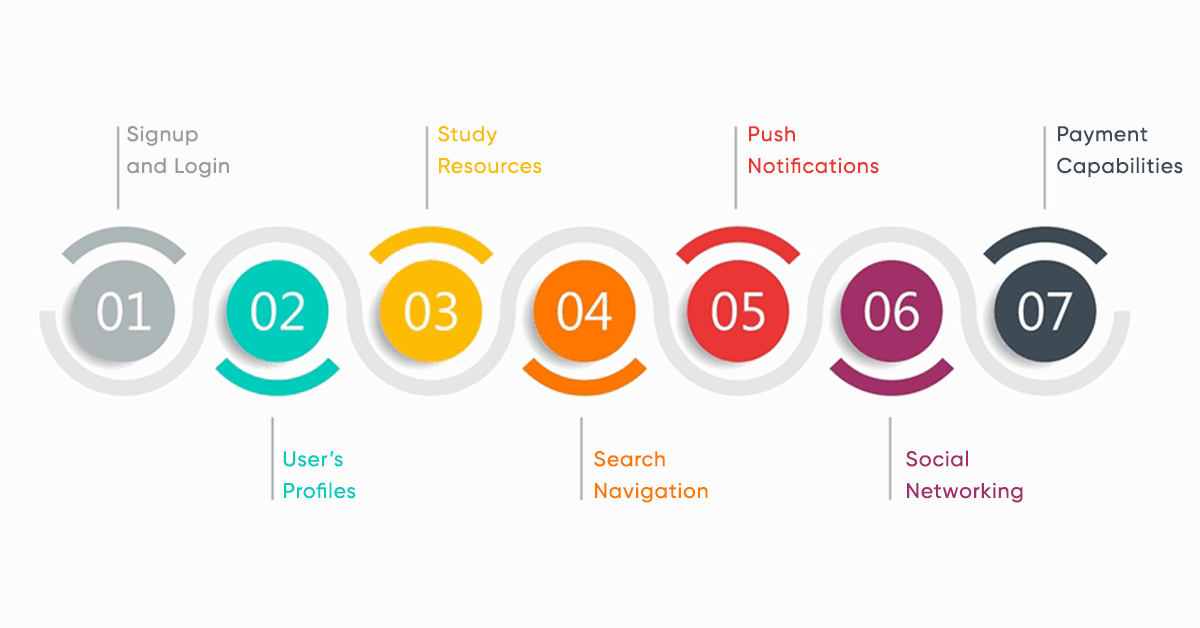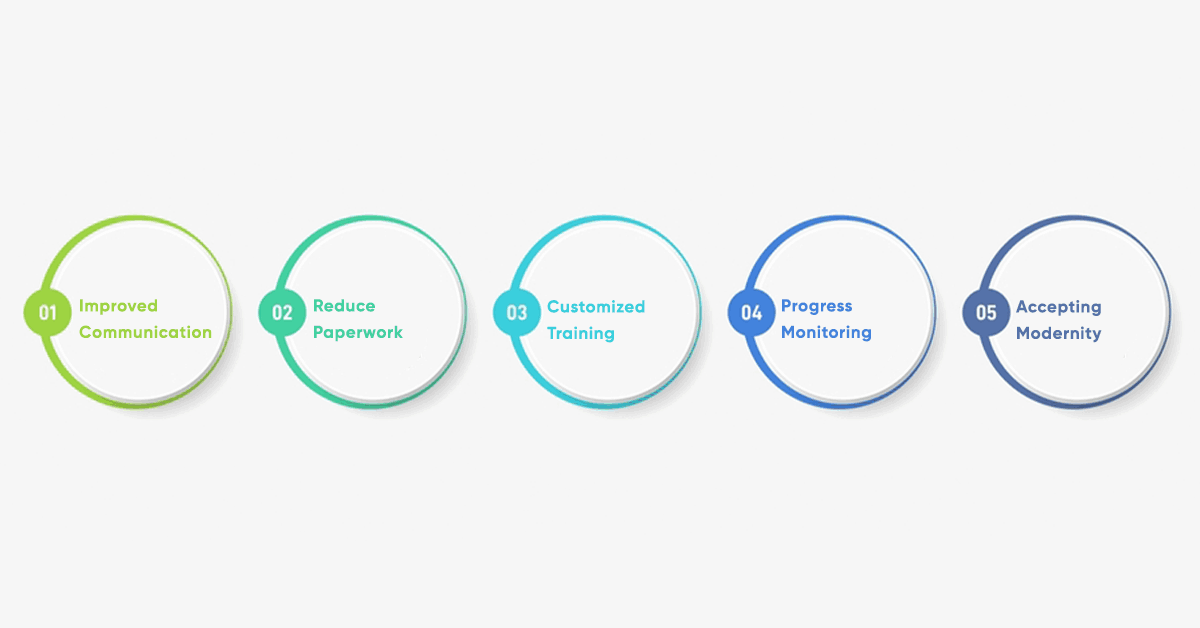How to Create an Educational App

Quick Summary :
This guide explains how to develop educational apps, covering various types such as language learning, LMS, and classroom apps. It highlights key features like user profiles, push notifications, and social networking. Additionally, it outlines the steps for development, including ideation, research, design, testing, and deployment, with a focus on on-demand solutions.Educational apps can be defined as applications that provide an opportunity for students, teachers, learners, and those willing to gain new skills to study non-traditional methods. Such digital platforms can find education materials, enroll in remote classes, or develop skills. These apps are necessary for modern education to offer students different orientations and promote personality and career growth.
According to the global market, the e-learning market through the online platform is projected to reach 400 billion US dollars by 2026. These statistical data point to the fact that there is growth in the educational app market.
In this blog, you will learn about how to make an educational app, its different types, advantages, and more.
Types of Educational Apps

Mobile on-demand educational applications have transformed people’s way of learning. Here’s an overview of the most popular types of educational apps:
Language learning apps
Learning Management System (LMS) Apps
LMS apps are meant for learning institutions with which learning content can be managed and delivered. Teachers can post content, submit assignments, and monitor students’ progress here. Custom educational app design and development can offer the development of LMS apps that would be able to expand and have an increased number of distinctive features. Online classes and grading systems are the optional features of this application.
Classroom Education Apps
These apps offer teacher and student resources in a digital environment. It enhances classroom learning. Some conspicuous uses of these apps are whiteboard, marking of attendance, and conferential or collaborative work. Teaching methods incorporated in educational app creation for classrooms. Thus, it leads to a much more active and interesting learning process.
Online Courses apps
These apps allow users to access numerous courses. It ranges from academic disciplines to occupational trades. These can include, video lectures, reading assignments, and tests in the form of flash animations. There are strategies for e-learning application development that enable a creator of online course apps to provide individually tailored course paths and progress tracking. It helps to achieve goals better. Besides, it is useful in improving the perspectives of the user.
Exam preparation apps
These apps are specifically for students who are in preparation for appearing for competitive exam sessions. These offer simulated checks, coaching assessments, and performance reviews. On-demand educational app development aims to help students prepare for exams and can be focused on particular tests. It adapts to a personal learning strategy that aligns with the exam’s features.
Education apps for kids
These apps are entertaining for children as they feature games, animations, and other engaging activities that can teach basic ideas to children. That is why educational apps are designed for kids – all the content must be as entertaining and safe for the kids as possible. They help teach a love for learning from a very young age and are a key tool for knowledge acquisition.
Features You Need in Your Educational App

An effective on-demand educational app is a planned process that calls for feature integration that contributes to the app’s effectiveness. Here are some key features you need in your educational app to ensure it meets users’ needs and provides a seamless learning environment:
Signup and Login
Any learning app’s enrollment and sign-in processes need to be seamless and safe. This feature should allow users to sign in with their email addresses, social media accounts, or SSO. When asking how to create an educational app for Android, it is crucial to implement user authentication and make signing up as easy as possible.
Users’ Profiles
These user profiles for individual users enable the students and educators to individualize their learning environment. The profile can contain personalized data about a user, record his/her progress, and demonstrate achievements. Some elements that make up how to create an educational app for students include features enabling users to customize their experience to encourage usage, thus enhancing learning.
Study Resources
An important thing that is typical for such applications is to have a library of useful materials and study resources. These could be videos, e-books, quizzes, or interactive lessons. It is crucial for on-demand educational app development from scratch to include high-quality and easily distinguishable learning content for diverse learning preferences in students.
Search Navigation
The search function is important as it allows users to find particular resources easily and effectively. When you build education apps, make the search and navigation functions clear and easy so can easily locate the information they require.
Push Notifications
Notifications on the app keep the user engaged by constantly prompting about the next lesson, assignment, or update. Educational app features and design should also incorporate a notification system that delivers valuable information at the right time and in adequate quantities.
Social Networking
Including social networking elements can bring a sense of familiarity among the users. Components like forums, discussion boards, and chat functions allow learners to interact, which is an important aspect to consider when considering how to make an educational game app or any app that would be improved by peer learning.
Payment Capabilities
If apps provide exclusive materials or lessons, users can pay for them, then, the integrated safe payment solutions are crucial. An on-demand educational app development company should accept several forms of payment to provide users with an easy and secure method of paying for the products.
Ready to transform education with a custom-built app?
Benefits of education app

Education apps provide numerous advantages, making them essential for students and teachers. As a result of technological advancements, the incorporation of educational apps has remained essential in the current society. Below are some key benefits:
Improved Communication
Education apps greatly improve the communication process and interactions between teachers students, and parents. It is also easy to send messages, notifications, and alerts to students on new assignments, deadlines, and any changes in the calendar. Of course, building an educational app involves an effective means of communication to provide smooth operation on the app, which would promote the sharing of information effectively by the participants. This direct communication approach minimizes misunderstandings, improving the educating process’s cohesiveness.
Reduce Paperwork
Another worthy benefit of on-demand educational apps is that they cut down on paperwork. Learning technology allows for the collection of documents, assignments, and records in an organized manner to allow easy access. This is convenient for educators and helps contribute to environmental conservation. In the educational app development process, features such as application submission and grading can reduce paperwork hence spending more time on paperwork and less on training.
Customized Training
Educational applications are more flexible than traditional classroom models and allow training to be adapted according to the level of skill requirements. In mobile learning app creation, the teachers provide individualized instruction to each learner, based on their abilities and learning style. This means that students are catered for individually and this would help improve their learning ability. The convenience and flexibility of offering different materials, including videos, quizzes, and interactive modules also enhance the learning experience. Technology-assisted learning tools that are specially designed can enhance student performance by about 30% more than traditional learning.
Progress Monitoring
A benefit of educational apps is that progress tracking becomes easier, faster, and more accurate. Online learning app development also encompasses the functionality to monitor the student’s progress, create elaborate reports, and offer feedback. So, due to on-demand educational app development tools, a developer can design a clear interface and navigation to track students’ accomplishments and activities. As many as 90% of the teachers opined that digital tools for progress monitoring are useful for understanding the learning and participation of students.
Accepting Modernity
The on-demand educational app familiarizes students and educators with technologies assuming ever greater importance in the present day. By specifying educational mobile app development, students develop their ability to use apps, which is helpful in our technologically oriented society. Also, educational app testing and deployment procedures guarantee that the apps are easily used and efficient, thus making people adopt them in large numbers.
Steps to Create an Educational App
Designing an effective educational application requires several important steps that should be taken before deploying the final product. No matter if you aim to create an educational application for teachers, kids, or schools it will remain very similar. Here’s a breakdown of the key steps involved:
Step 1. Ideation
The first process involved in app development to be used in the education sector is the generation of ideas. This includes creating and identifying the app’s concept, its intended market, and its main attributes. Whether you want to build an education app for teachers or build an educational app for children it is essential to have direction. Think about what issues the app can address and what positive outcomes its users will gain.
Step 2. Research
Researching is helpful when it comes to filling particular gaps in the market, and which features are generally desired most. For instance, if you want to know how to create an educational app for kids, it is first necessary to determine which apps from this category have high usage levels and find out their strengths and weaknesses. This step is useful in fine-tuning the app’s concept and understanding if it meets the intended user needs.
Step 3. Design
This stage refers to the conceptualization of the application through wireframes and mock-ups that define the general layout of the app. Educational app design should be understandable, motivating, and straightforward. When designing an app for use in schools to support learning and teaching when undertaking developing an educational app for schools, the design should be efficient for learning and teaching. This means focusing on coloring, font, and graphic interfaces that appeal to the target users without compromising usability.
Step 4. Development
The development phase comes once the design has been completed. This involves exploring the features of the app and the functionalities that are required to be coded. Deciding on how to create a successful educational app, one has to set the right technology stack and development tools that will be scalable and efficient. Ensure the app is compatible with devices and operating systems, including iPhones and Android.
Step 5. Testing
The testing stage is the final process to eliminate any bugs hindering the overall usability of the application and presenting a smooth interface to the users. Carry out effective and efficient testing, including usability, functionality, and performance. If you are interested in learning how to create an educational app for teachers, get in touch with the target audience to get more ideas on how to improve the app.
Step 6. Deployment
The last process is distribution, during which the app is released to the general public via digital stores such as the App Store or Google Play Store. Users and their feedback must also be observed after the app is deployed, and the app should be frequently updated to correct problems and enhance functionality.
Conclusion
Therefore, what is educational app development? It is very essential for developing effective technology-enabled learning interventions. Thus, knowing how to create educational apps that are outlined in the steps in this paper will help in designing comprehensive and efficient learning platforms that meet various needs in education. Since more and more applications are being created to be used in the sphere of e-learning, properly designed and developed apps, following the proper procedure of being posted to the platform or store, prove beneficial in the target market.

